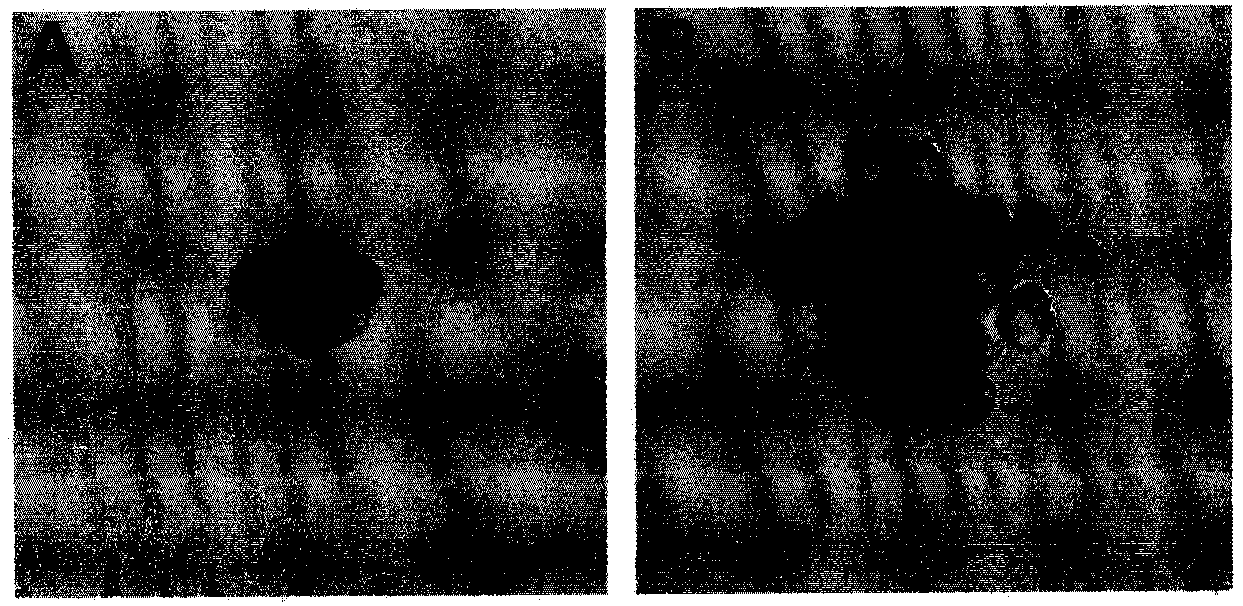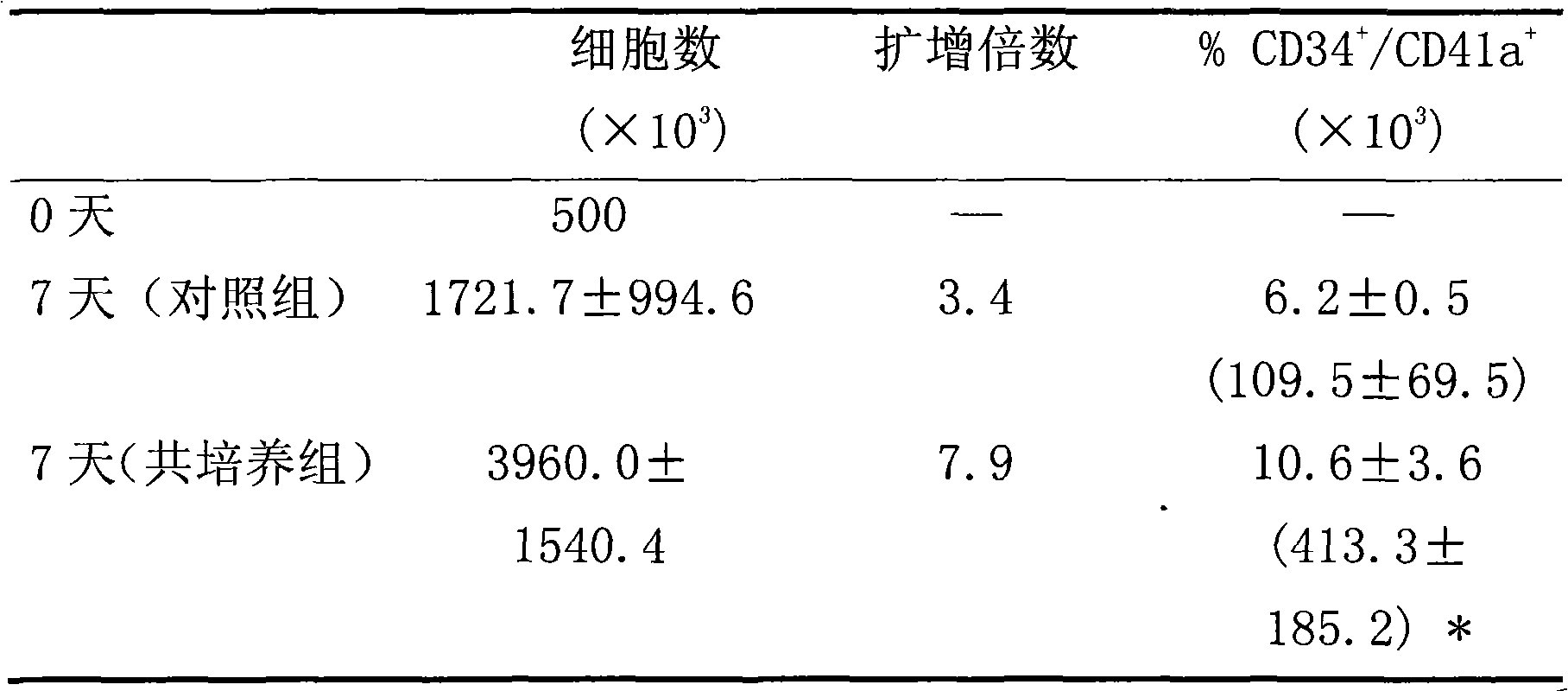Method for amplifying megakaryocyte progenitor cell from human cord blood CD34<+> cell
A technology of megakaryotic progenitor cells and human cord blood, applied in biochemical equipment and methods, microorganisms, tissue culture, etc., can solve the problem of limited number of expanded megakaryotic progenitor cells
- Summary
- Abstract
- Description
- Claims
- Application Information
AI Technical Summary
Problems solved by technology
Method used
Image
Examples
Embodiment 1
[0023] (1) Isolation and purification of cord blood CD34 + cell
[0024] Add hydroxyethyl starch to the cord blood at a ratio of 5:1 volume ratio of umbilical cord blood: hydroxyethyl starch, mix thoroughly, and let stand for more than 30 minutes to settle red blood cells. Aspirate the supernatant, add it to the lymphocyte separation medium (density 1.077g / mL), collect mononuclear cells after density gradient centrifugation, and wash twice with PBS / EDTA solution. Add an appropriate amount of CD34 magnetic bead antibody according to the number of mononuclear cells, incubate at 4°C in the dark for 30 minutes, and use the MiniMACS immunomagnetic adsorption separation device to separate and purify CD34 + cell. Some of the cells were labeled with mouse anti-human PE-CD34 monoclonal antibody, and the average purity of the sorted cells was detected by flow cytometry as 95.8%±0.8%.
[0025] (2) Isolation, culture and identification of human bone marrow mesenchymal stem cells
[00...
Embodiment 2
[0035] (1) Isolation and purification of cord blood CD34 + cell
[0036] Add hydroxyethyl starch to the cord blood at a ratio of cord blood: hydroxyethyl starch volume ratio of 5:1, mix well, and let stand for more than 30 minutes to settle red blood cells. Aspirate the supernatant, add it to the lymphocyte separation medium (density 1.077g / mL), collect mononuclear cells after density gradient centrifugation, and wash twice with PBS / EDTA solution. Add an appropriate amount of CD34 magnetic bead antibody according to the number of mononuclear cells, incubate at 4°C in the dark for 30 minutes, and use the MiniMACS immunomagnetic adsorption separation device to separate and purify CD34 + cell. Some of the cells were labeled with mouse anti-human PE-CD34 monoclonal antibody, and the average purity of the sorted cells was detected by flow cytometry as 95.8%±0.8%.
[0037] (2) Isolation, culture and identification of human bone marrow mesenchymal stem cells
[0038] Collect 3-5m...
Embodiment 3
[0047] (1) Isolation and purification of cord blood CD34 + cell
[0048] Add hydroxyethyl starch to the cord blood at a ratio of cord blood: hydroxyethyl starch volume ratio of 5:1, mix well, and let stand for more than 30 minutes to settle red blood cells. Aspirate the supernatant, add it to the lymphocyte separation medium (density 1.077g / mL), collect mononuclear cells after density gradient centrifugation, and wash twice with PBS / EDTA solution. Add an appropriate amount of CD34 magnetic bead antibody according to the number of mononuclear cells, incubate at 4°C in the dark for 30 minutes, and use the MiniMACS immunomagnetic adsorption separation device to separate and purify CD34 + cell. Some of the cells were labeled with mouse anti-human PE-CD34 monoclonal antibody, and the average purity of the sorted cells was detected by flow cytometry as 95.8%±0.8%.
[0049] (2) Isolation, culture and identification of human bone marrow mesenchymal stem cells
[0050] Collect 3-5m...
PUM
 Login to View More
Login to View More Abstract
Description
Claims
Application Information
 Login to View More
Login to View More - Generate Ideas
- Intellectual Property
- Life Sciences
- Materials
- Tech Scout
- Unparalleled Data Quality
- Higher Quality Content
- 60% Fewer Hallucinations
Browse by: Latest US Patents, China's latest patents, Technical Efficacy Thesaurus, Application Domain, Technology Topic, Popular Technical Reports.
© 2025 PatSnap. All rights reserved.Legal|Privacy policy|Modern Slavery Act Transparency Statement|Sitemap|About US| Contact US: help@patsnap.com



